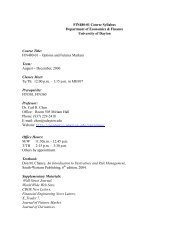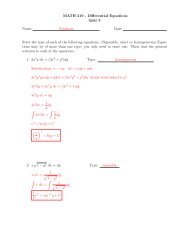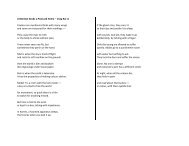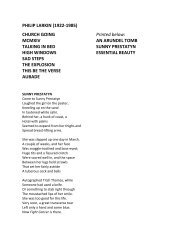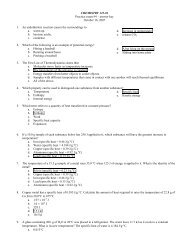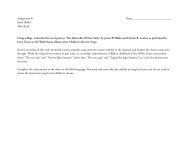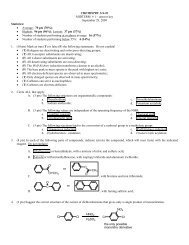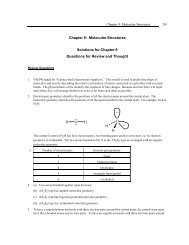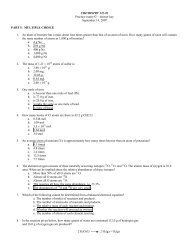Chap 26
Chap 26
Chap 26
You also want an ePaper? Increase the reach of your titles
YUMPU automatically turns print PDFs into web optimized ePapers that Google loves.
MONEY, BANKS, AND THE FEDERAL RESERVE 227<br />
a) The formula for the money multiplier is [(1 + c) ÷ (r + c)] where c is ratio of currency<br />
to deposits and r is the required reserve ratio.<br />
2. The magnitude of the U.S. money multiplier depends on the definition of money that is<br />
used. For M1, the money multiplier is 1.8. For M2, the money multiplier is 8.6.<br />
Reading Between the Lines<br />
The news article reports how electronic payments, such as debit cards, have grown in importance over the<br />
past four years. Debit cards are now used for 32 percent of in-store purchases, the same proportion as cash<br />
and more than checks or credit cards. The analysis stresses the role of transactions costs in determining<br />
what means of payment is used.<br />
New in the Seventh Edition<br />
The topics in the 6th edition’s <strong>Chap</strong>ters 12 and 13 (27 and 28 in Economics) have been reorganized into<br />
this editions <strong>Chap</strong>ters 10 and 11 (<strong>26</strong> and 27 in Economics). In this edition, all the institutional<br />
material—the definition of money, the description of the banking system, and the fundamentals of the<br />
Fed—are in this chapter. comes into one chapter—<strong>Chap</strong>ter <strong>26</strong>. The material on how monetary policy<br />
affects the economy and the demand for money has been moved to the next chapter.<br />
The discussion of how banks create deposits by making loans has been simplified to consider only the<br />
more realistic case of an economy with many banks. There is a new discussion of the size of the money<br />
multiplier in the United States. The data and figures are updated to 2003. The new Reading Between the<br />
Lines discusses electronic payments and the role transactions costs play in determining how a payment is<br />
made.<br />
Teaching Suggestions<br />
1. What is Money?<br />
The defining characteristic of money. Adam Smith wrote, “Money is a commodity or token that<br />
everyone will accept in exchange for the things they have to sell.” Most people have interpreted this<br />
statement as defining money as the medium of exchange. That interpretation is wrong. Smith is<br />
defining money as the means of payment. Money is a commodity or token that everyone will accept<br />
as payment for the things they have to sell.<br />
When Michael Parkin was a young economist, he had the enormous good fortune to meet Anna<br />
Schwartz, Milton Friedman, and a group of other leading monetary economists. It was during the<br />
late 1960s when the monetarist debate was alive and well and people were still arguing about whether<br />
the demand for money was interest inelastic (as the monetarists claimed) or almost perfectly elastic<br />
(as the Keynesians claimed). Anna made a remark that for Michael was one of those defining<br />
moments. She said money is the means of payment. Nothing else performs this function. It is unique<br />
to money. Many things serve as a medium of exchange, unit of account, or store of value, but money<br />
alone serves as the means of payment—the means of settling a debt so that there is no remaining<br />
obligation between the parties to a transaction.<br />
Get the class involved in figuring out what money is. To involve the students in the process of<br />
determining what money is, after noting its definition and three functions, ask them what they think<br />
should be counted as money. List the suggestions on the board before commenting on them. Coins<br />
and currency will certainly be mentioned. Usually each class has a few members who have read the




